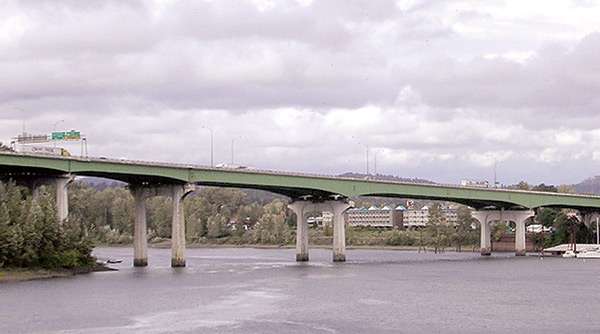Senior Reporter
State DOTs Eye New US Infrastructure Grants

Several state transportation agencies are reviewing whether to proceed with a federal request to reapply for infrastructure grants that would rely significantly on private capital.
Under the new Infrastructure for Rebuilding America (INFRA) grants, the U.S. Department of Transportation announced late last month that states must propose projects that would help promote private-sector funding.
The INFRA grants will be “using innovative approaches to improve the necessary processes for building significant projects,” DOT explained.
The INFRA grants replaced FASTLANE grants, which were predominantly for freight projects.
FASTLANE, or Fostering Advancements in Shipping and Transportation for the Long-term Achievement of National Efficiencies, grants were established by a 2015 highway law.
The Nevada Department of Transportation, which is among the agencies that will either amend its previous FASTLANE application or submit new requests for funding under the INFRA program, expressed concerns about the Trump administration’s focus on public-private partnerships and loans.
“These are financing tools, not funding mechanisms, and do not generally fit well for Nevada and many other states,” Tony Illia, the state agency’s public information officer, told Transport Topics on July 5. “We appreciate the focus on ‘leveraging federal funds,’ but that was already a focus, looking for higher non-federal matches, etc., while this notice seems to focus more on innovative finance.”
In neighboring Oregon, transportation officials will await legislators’ action on a $5.3 billion proposal to raise taxes and fees to pay for transportation projects before deciding whether to apply for the federal INFRA grants. The state legislation, expected to be considered as early as this month, would upgrade roads and bridges throughout Oregon. The measure also is key to the agenda of Gov. Kate Brown (D).
Last year, Oregon’s Department of Transportation applied for a $62 million grant to help fund a reinforcement project at the Abernethy Bridge. Built in 1970, the structure connects West Linn with Oregon City.
“We will await action from our state Legislature to see whether that state-level infrastructure investment package passes, and then we will decide at that point on which project to resubmit,” Trevor Sleeman, senior federal affairs adviser at the Oregon Department of Transportation, told TT. “Whether that’s a resubmission of the Abernethy project, or whether that’s a completely new project, at this point I can’t say for sure.”
Transportation agencies in Idaho, Maryland, Rhode Island and Virginia also were seeking grants under the FASTLANE program. As of press time, Those departments did not respond to requests for comment.
The FASTLANE freight grants were a key part of the Obama administration’s transportation agency.
But in May, Transportation Secretary Elaine Chao emphasized before a U.S. Senate committee the latest round of FASTLANE grants were going to be announced shortly. Then, two months later, DOT unveiled the INFRA grants under her leadership.
“The president and the department are committed to revitalizing, repairing and rebuilding America’s aging infrastructure,” Chao said when she announced the new grants. “By ensuring the right incentives, projects selected under this program will be better able to make significant, long-term improvements to America’s transportation infrastructure.”
Agencies and authorities that had sought FASTLANE grants and choose to reapply for the INFRA grants must specify how their projects meet the new guidelines. Ten percent of funding scheduled for this year will be awarded to projects qualifying as “small.”
DOT also indicated that “an application that proposes a 20% federal share will be more competitive than an otherwise identical application proposing 50% federal share.” Specifically, projects that incorporate private-sector contributions, such as a public-private partnership, are “likely to be more competitive than those that rely solely on public non-federal funding,” according to DOT.
The new grants program will target myriad projects. For large projects, the grant must be at least $25 million, and for small projects, the grant must be at least $5 million, according to the DOT announcement. For each fiscal year, 10% of funding availability will be aimed at smaller projects. Requests for funding for a network of projects could entail improvements to efficiency along a rail corridor.
The department’s notice of funding opportunity will remain open through Nov. 2.




